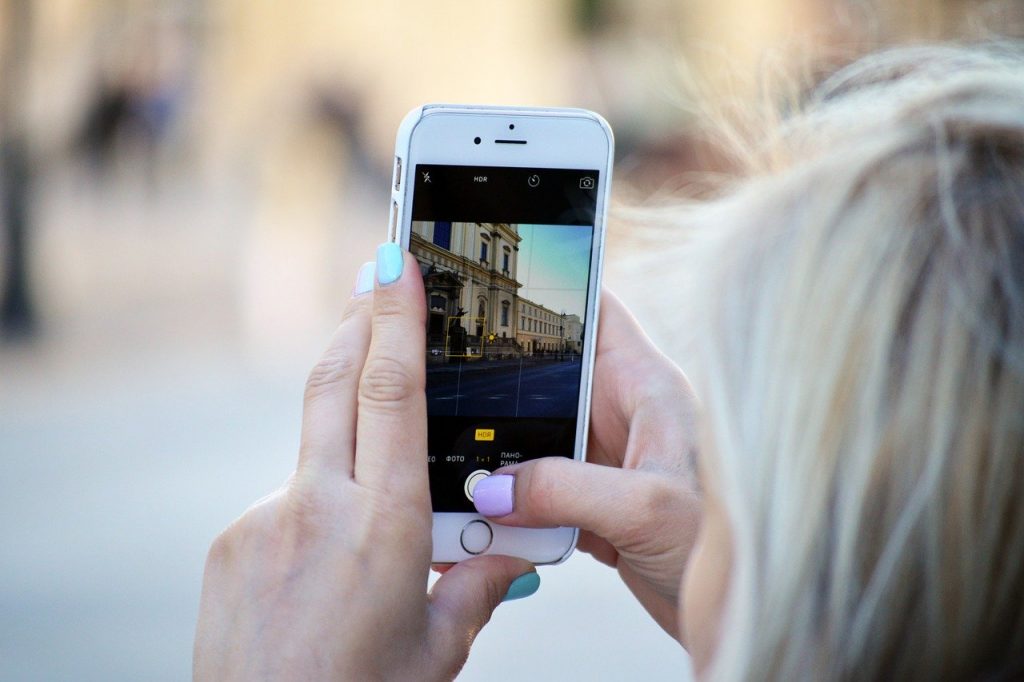Digital Travellers
An Exploration of the Influence of Digital Technologies on Millennials’ Travel Behaviour
About the author
Caitlin McGarry is a final year student at Ulster University studying Communication, Advertising and Marketing. This is a summary of her dissertation.

Digital technologies have concurrently developed and disrupted travel and tourism.

The proliferation of online platforms parallels the diversification of travel offerings, corresponding with global tourism expanding at an inexorable rate (Mintel, 2014). As travel products’ diversity and demand increases (Buhalis and Law, 2008), exigent travel consumers consult highly-informative platforms. These include social media, specialist review websites, including TripAdvisor, and online travel aggregators (OTAs), including Expedia, Booking.com and Skyscanner.
As ‘digital natives’, millennials have grown up with “deeper connections to the world than previous generations” and desire to enrich their lives through travel (Expedia, 2016). In doing so, they manifest a multitude of colourful travel motivations and attitudes.
Millennials are considered one of the most important audience segments for tourism (Veiga et al., 2017), yet contemporary insight is lacking regarding how online platforms and marketing may affect or be affected by millennial travellers.
This research explored the role of online platforms on millennials’ travel behaviour, and subsequent travel and tourism industry implications. A sequential primary research approach was adopted, involving an online survey (236 respondents) and a focus group which explored the influence of online platforms in millennials’ travel behaviour.
Although global tourism has generally seen an upward trend, it is projected that millennials will soon represent 50% of travellers (Hamed, 2017).
While there are innumerable motivations behind millennials’ travel-planning, Dann’s (1977) ‘push-pull’ theory is widely accepted. ‘Push’ (internal) factors drive tourists away from home; ‘pull’ (external) factors attract tourists towards destinations (Prayag and Ryan, 2011).
Regarding push motivations, millennials have a desire to relax, a need to escape routine and a hunger to broaden their horizons. Having an affinity for travel (Ruppenstein, 2016), they favour spontaneous, ethnically-authentic experiences and immerse themselves in foreign cultures (Fenton, 2016). They are curious, desire to learn and enhance their global awareness via the ‘unknown’ and ‘undiscovered’ (Rita et al., 2019).
For millennials, ‘pull’ motivations often concern destinations’ qualities, including the weather and local attractions/activities (Correia and Pimpao, 2008). Beyond this, this study suggests that ‘pull’ factors determine destinations’ reputations, whilst subsequently triggering push motivations (Yousaf et al., 2018).
As the ‘digital native’ generation (Prensky, 2001), ICT plays a significant role in millennials’ travel behaviour. This research sought to uncover millennials’ motivations for using the Internet when travel-planning, alongside the role of OTAs. Underpinning millennials’ use of OTAs, the findings revealed financial, choice, convenience and control motivations. Incidentally, it was suggested that high-street travel agents’ standardised approach (Mintel, 2014) discourages millennials availing of their services. As ICT permits on-demand access to the sharing economy (Garikapati, 2016; Airbnb, 2019), the popularity of its services, including Airbnb and Uber, amongst millennials was reinforced.
It is well-established that social media is a major driver behind millennials’ travel behaviour. As the sharing of user-generated content (UGC) proliferates, this research examined the extent to which UGC influences millennials’ travel choices.
UGC across social media and review sites, notably TripAdvisor, inspires millennials travel choices, especially regarding holiday type and destination (Xiang and Gretzel, 2010; Tussydiyah and Fesenmaier, 2009). However, this study advocates that trust varies between UGC and non-UGC sources and, although commercial content is important, UGC is comparatively more important.
It is evident that millennials extend their definition of ‘peers’ to bloggers and influencers, yet a disparity exists in the trust afforded to paid versus unpaid influencers. Evidently, the peer visibility offered by social media represents a proven means for travel motivations and social comparison amongst millennials. As this has become a prolific attribute of travel behaviour (Quartz, 2019), insight was obtained regarding millennials’ UGC-sharing motivations, which included a need for aesthetics.
Unsurprisingly, UGC’s visual aspects is important, as social media presents an environment in which millennials’ craft their own self-image (Harridge-March et al., 2010). Still, this study imposes ambivalence surrounding millennials’ inclination to share UGC for the purposes of ‘likes’ (Fromm and Garton, 2013).
Millennials represent the majority of travel consumers and will continue to hold this position, therefore are an attractive segment for tourism marketing (Kim et al., 2015). This research facilitates tourism providers with a better understanding of the ways in which travellers, specifically millennials, make travel-planning decisions. Notably, it was revealed that millennials perceive travellers’ reviews as more useful than tourism providers’ descriptions. Reading negative reviews often prepares millennials for “disappointment”. Moreover, UGC influences millennials’ opinions of destinations, and may occasionally dissuade them to travel. This study conveys a link between UGC, destination reputation and travel motivations, representing an invaluable insight for tourism practitioners. As millennials’ travel-planning depends on evaluative destination attributes (Ukpabi and Karjaluoto, 2018), this study reinforces that negative UGC must drive improvement. Tourism officials must therefore monitor the valence of UGC and identify where improvements may be required.
Participants in this study suggested that the travel industry lack knowledge regarding social media marketing, despite its recognised importance amongst millennials (Schmidt et al., 2008). Commercial tourism content is considered “outdated”, “no fun” and limited to simplistic posts featuring “typical images”. Evidently, industry marketers must prioritise posting content for the purpose of online presentation, and especially cater to millennials’ travel motivations. Additionally, travel agents could collaborate with OTAs to maximise their online presence and enhance digital marketing efforts (Anderson, 2011). This could be particularly effective in tackling ‘disintermediation’, which has altered the role of high-street travel agents (Liang et al., 2016) as millennials increasingly bypass offline travel-planning intermediaries. Furthermore, marketers must consider how millennials create additional product value (Gretzel, 2007).
If millennials react favourably to an activity, they “post about it…which could lead to more people doing it”. Tourism practitioners could therefore enhance digital marketing campaigns by encouraging travellers to use hashtags, with the intention that others will see, subsequently be influenced by, this UGC.
Ultimately, tourism practitioners should strive to leverage millennials’ intensive use of online platforms and UGC-sharing into their digital marketing strategies. Thus, it is argued that this study is beneficial to inform industry professionals on the role and use of online platforms when marketing to millennials.